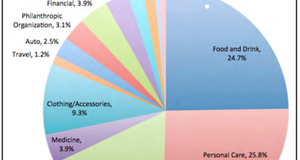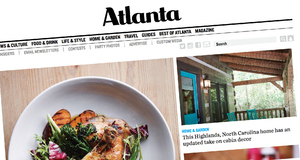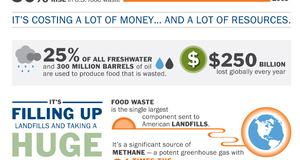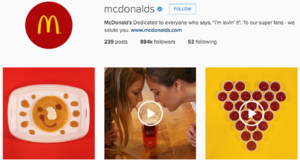From Elon Journal of Undergraduate Research in Communications VOL. 5 NO. 2Representations of American Culture in Food Advertisements in Mainstream, Latina, and African-American MagazinesMethodologyThe author collected magazines with a majority female readership that were published in 2014 and divided them into different groups based on the race/ethnicity they targeted. There were three groups: White/mainstream, African-American, and Latina. The mainstream/white group contained issues of Cosmopolitan, Glamour, Self and Women’s Health. These magazines all feature primarily white models, though they are by no means intended for an exclusively white audience. Both Self and Women’s Health have a strong focus on health and fitness, but Cosmopolitan and Glamour focus much more on health, beauty, and general women’s interests. The African-American group contained issues of Essence and Ebony. The Latina group contained issues of Cosmopolitan for Latinas (which is written in English), Cosmopolitan en Español (written in Spanish) and People en Español. It is important to note that though Cosmopolitan for Latinas is written in English, many of its ads were in Spanish. These magazines were selected because their readerships were primarily made up of females of the racial/ethnic category they were grouped into. There were more magazines used in the “mainstream” category than the other two because they are more abundant and therefore were more easily accessible. The author looked at 14 magazines total and counted the number of food advertisements in each. Advertisements for vitamins, gum and alcoholic beverages were not counted, but advertisements for grocery stores and restaurants were. The sample included six magazines in the mainstream/white group (two issues of Women’s Health, two issues of Self, one issue of Cosmopolitan, and one issue of Glamour), four magazines in the African-American group (two issues of Ebony and two issues of Essence), and four magazines in the Latina group (two issues of Cosmopolitan en Español, one issue of Cosmopolitan for Latinas and one issue of People en Español). Afterward, the author coded for various themes in advertisements. The themes selected had been previously observed by the author in advertisements or were discussed in the literature reviewed. The coding scheme was based on the following definitions: Convenience: If advertisements contained phrases like “on-the-go” or mentioned how the food could fit into a “busy lifestyle,” they were coded as showing convenience. Taste: Advertisements that contained phrases like “delicious” or “great-tasting” or similar claims were coded as showing taste. Nutrition facts: If an advertisement contained details about calories, fat, carbohydrates, protein, or other nutrients, it was coded as containing nutrition facts. Nutrition claims: If an advertisement made a claim about nutrition such as “wholesome,” “all-natural” or “nutritious,” it was coded as containing a nutrition claim. Family: If an advertisement mentioned family or pictured families spending time together, it was coded as showing family. Community: If an advertisement contained messages or photographs about friendship, communities, or connecting with others, it was coded as showing community. Willpower: Advertisements that included messages about weight loss, “wiping your slate clean,” starting over, or other general messages about sticking to a diet, it was coded as showing willpower. Motivation: If advertisements had motivational messages about achievement or phrases like “go get ’em” they were coded as showing motivation. The total number of food advertisements among each racial/ethnic group was then added up, as were the number of food advertisements that displayed each theme listed above. FindingsThere were striking differences in the themes found in magazines for each group. The most common themes among ads in the mainstream/white group were nutrition facts and nutrition claims. The most common themes among ads in the African-American group were taste and nutrition facts as shown in Table 1. And the most common theme in the Latina group was, by far, family. This suggests that mainstream America values nutrition in their food, whereas African-Americans value taste and Latinas strongly associate food with family. This is illustrated in the following McDonald’s ad, which was printed in the May 2014 issue of People en Español in Figure 1. Table 1. Themes found in magazine ads for three groups
Ads in African-American and Latina magazines were much more likely to display community values than ads in mainstream magazines were. Convenience was emphasized in 17.1% of mainstream magazine ads, whereas it was nonexistent in ads for African- Americans and Latinas. Motivation was also displayed in 20% of mainstream magazine ads, but it wasn’t present in any Latina ads and only in one African-American ad. Nutrition claims, like “wholesome” or “all-natural” weren’t too common in the African-American and Latina groups (16.7% and 14.3% of ads, respectively), but they were ubiquitous in mainstream magazine advertisements – over half (62.9%) of ads included nutritional claims. Figure 1. This McDonalds advertisement, which focuses on family rather than food, health, or taste, was published in the May 2014 issue of People en Español. It was also interesting to note that advertisements for the same product appeared in multiple magazines, but the messaging differed between magazines. For example, both Women’s Health and People en Español contained the same advertisement for Quaker Real Medleys snacks. In the Women’s Health ad, the copy read: “Sweet apples. Crunchy walnuts. Yummy multigrains. Quaker Real Medleys has all the real, delicious fruit and nut combos a go-getter like you wants, in a cup that’s just as on-the-go as you are. With good energy, it’s how we’re fighting the human energy crisis one cup at a time. #QuakerUp” (5) Like many other advertisements in the mainstream magazines, this ad copy emphasizes the product’s convenience, taste and natural ingredients (“real, delicious fruit and nut combos”). The same advertisement in People en Español also focused on energy, but instead of just suggesting that the product is fuel for a busy day, it suggests that it can help keep moms going. The Spanish copy reads: “Quaker Real Medleys, una deliciosa combinacion de frutas, nueces y multigranos que tiene lo que quiere una mama como tu para hacer render el dia. Es asi como combatimos la crisis de energia humana: una taza, un tazon y una barra a la vez. En sus Marcas, listos… #QuakerUp.” (57) This roughly translates to: “Quaker Real Medleys, a delicious combination of fruit, nuts and multigrains, is what you want as a mom to stretch your day. This is how you fight the crisis of human energy: a cup, a bowl and a loaf at a time. On your Marks, get set… #QuakerUp.” This supports the findings that mainstream advertisements focus mostly on nutrition, taste, and convenience, while ads for Latinas focus mostly on family. Another significant finding was the number of food advertisements in each magazine. Mainstream magazines contained an average of 5.8 food advertisements per issue, followed by African-American magazines (3.0 ads per issue) and Latina magazines (1.8 ads per issue). In the case of Latina magazines, only one out of the four magazines in the sample contained any food advertisements. DiscussionSince advertisements are powerful symbols of culture, the differences in messages across the racial/ ethnic groups suggest that mainstream (mostly white) Americans, African-Americans, and Latinas all value different things in their food products and associate food and mealtimes with different values. The findings suggest that mainstream America sees food as something that should be nutritious and healthy, since the majority of ads in mainstream magazines were centered on nutrition facts and claims. Taste was also mentioned in nearly half of mainstream ads, but it was often used in conjunction with a nutrition claim, perhaps to show that nutritious food can also taste good (Refer to Figure 2). Figure 2. This information-packed advertorial for SmartOnes prepackaged meals was published in the February 2014 issue of Women’s Health. There were significantly more food advertisements in the mainstream magazines than in others (5.8 compared to 3.0 and 1.8 in African-American and Latina magazines, respectively). Since the content analysis suggests that mainstream America values nutrition, this could cause food companies to create more ads in an effort to stand out in a nutrient-conscious market. Family and community were only highlighted in a few mainstream ads, but messages about convenience were included in 17.1 percent of mainstream ads and in 0 percent of African-American and Latina ads. This could suggest that mainstream America views food as a necessity for health and energy rather than something that can bring families and communities together. Since motivation was apparent in many more mainstream ads than African-American or Latina ads, this suggests that mainstream America associates food with power and energy more than Latina and African-American subcultures do. Though there were few food advertisements found in the Latina magazines, nearly all of them centered on family values. The difference in the copy in the Quaker Real Medley advertisement was especially striking – copy in both English and Spanish ads focused on energy and fuel, but the Spanish ad mentioned motherhood and the English one did not. This suggests that Latina culture is family-focused and food is an important part of bringing the family together. Half of the advertisements in African-American magazines centered on taste, which is unsurprising in food advertisements. There were no other themes apparent in the majority of advertisements. This could suggest that African-American culture views food as a basic part of life – something that may be tasty, nutritious, or enjoyable to share with others – but does not strongly correlate it with other values or emotions. Community was shown in 25 percent of African-American magazine ads, compared to only 14.3 percent in Latina magazine ads and 8.6 percent in mainstream magazine ads, which could suggest that African-Americans are more likely than other ethnic groups to associate food with socializing and community building (Refer to Figure 3.) LimitationsThere were several limitations to this study. First of all, media kits for the magazines did not contain information about the racial or ethnic makeup of its readers. Though the overwhelming majority of the women pictured in the magazines categorized as “mainstream” were white, it is hard to know what percentage of the magazines’ audience is white. The magazines categorized as African-American or Latina made it obvious that they were targeting those groups, though it’s possible that some of their readers were from different ethnic or racial backgrounds. Though all of the magazines in this study had a majority female readership, some had a higher male readership than others. For example, Ebony’s readership was about 35 percent male (Barnett), whereas Self’s readership was only 5 percent male (“Self Circulation Demographics”). This could change the types of messages and types of advertisements in magazines. Future research could compare advertisements in the same publication in different languages. For example, a future study could directly compare themes in ads in Cosmopolitan, Cosmopolitan en Español and in Cosmopolitan for Latinas. This would control for differences in gender and interests in audiences. There may have been many lurking variables that were not accounted for in this study. For example, the audiences of Ebony and Women’s Health do not just differ in race – they also differ in gender makeup, interests, and possibly age and household income. These are all demographic data that may influence advertisers’ messages. ConclusionA larger, more systematic study will need to be conducted before any conclusions can be drawn about how the values of America’s major ethnic groups compare to its “mainstream” group. However, this study suggests that African-Americans and Latinas may view food differently than the mainstream American group does. Advertisers should understand that the same messages will not resonate with all groups, so a nutrition-focused advertisement in a mainstream magazine like Glamour may not be as persuasive to a Latina reader as it is to a white reader. As America’s racial and ethnic makeup changes, this may change the “mainstream” culture and advertisers will need to take into account a variety of different attitudes, values, and beliefs when constructing advertisements. Advertisers also must take into account the wide array of factors that affect an individual’s values – as Tashiro’s research found, people of different ethnic backgrounds can react differently to life changes, like having children or accumulating wealth. Previous research also suggested that ethnicity is more than just racial identity – it is also how an individual “feels in and about a particular situation” (Knoblock-Westerwick and Coates 1603). Therefore, a minority woman may have different reactions to – and expectations of – content in mainstream magazines than she does in ethnicity-specific magazines. The type of magazine a minority woman chooses to read may depend on how she identifies herself and which culture she feels closest to, so judging the values of different ethnic groups based on magazine audiences may not take into account a whole cohort of women who identify as minorities but still feel that their values align with the mainstream. Modern American advertisers undoubtedly face a complicated market full of diverse races, ethnic backgrounds, ethnic identities, and cultural values. AcknowledgementsThe author would like to thank her faculty mentor, Dr. David Copeland, for his guidance and advice, without which this paper would not be published. The author also appreciates the reviewers who helped revise the article. ReferencesAdmad, Jamal. “Marketing in a multicultural world: The interplay of marketing, ethnicity and consumption.” European Journal of Marketing 37.11/12 (2003): 1599-1620. Web. Barnett, Amy DuBois. Ebony [Media Kit]. 2014. Web. 1 May 2014. “Beliefs about Food, Health, and Mothering.” Journal of Immigrant and Minority Health 9.4 (2007): 359-367. Web. “Cancer coverage and tobacco advertising in African-American women’s popular magazines.” Journal of Community Health 22.4 (1997): 261-270. Web. “Cultural Values.” Journal of Business Ethics 117.2 (2013): 261-280. Web. Doran, Caroline Josephine and Romie Frederick Littrell. “Measuring Mainstream US Cultural Values.” Journal of Business Ethics 117.2 (2013): 261-280. Web. Fernandez, Senaida, Norval Hickman, Elizabeth A. Klonoff, Hope Landrine, Kennon Kashima, Bina Parekh, Catherine R. Brouillard, Michelle Zolezzi, Jennifer A. Jensen, Zorahna Weslowski. “Cigarette Advertising in Magazines for Latinas, White Women, and Men, 1998-2002: A Preliminary Investigation.” Journal of Community Health 30.2 (2005): 141-151. Web. Gomel, Jessica N. and Angela Zamora. “English- and Spanish-speaking Latina Mothers’ Beliefs about Food, Health, and Mothering.” Journal of Immigrant and Minority Health 9.4 (2007): 359-367. Web. Hoffman-Goetz, Laurie, Karen K. Gerlach, Christina Marino, and Sherry L. Mills. “Cancer coverage and tobacco advertising in African-American women’s popular magazines.” Journal of Community Health 22.4 (1997): 261-270. Web. Kashima, Bina Parekh, Catherine R. Brouillard, Michelle Zolezzi, Jennifer A. Jensen, Zorahna Weslowski. “Cigarette Advertising in Magazines for Latinas, White Women, and Men, 1998-2002: A Preliminary Investigation.” Journal of Community Health 30.2 (2005): 141-151. Web. Knobloch-Westerwick, Silvia and Brendon Coates. “Minority Models in Advertisements in Magazines Popular with Minorities.” Journalism and Mass Communication Quarterly 83.3 (2006): 596-614. Web. Lohmann, Janet and Ashima K. Kant. “Comparison of food groups and health claims appearing in food advertisements in 3 popular magazine categories.” Journal of the American Dietetic Association 100.11 (2000): 1396-1399. Web Parker, Betty J. “Food for Health: The Use of Nutrient Content, Health, and Structure/Function Claims in Food Advertisements.” Journal of Advertising 32.3 (2003): 47-55. Web. Tashiro, Sanae. “Differences in Food Preparation by Race and Ethnicity: Evidence from the American Time Use Survey.” Review of Black Political Economy 36.3-4 (2009): 161-180. Appendix A: Content Analysis NotesCosmopolitan en Español, May 2014 – 0 food ads Cosmopolitan en Español, April 2014 – 0 food ads Ebony, May 2014 – 4 food ads
Women’s Health, March 2014 – 8 food ads
Essence, April 2014 –2 food ads
Women’s Health, April 2014 – 6 food ads
Self, February 2014 – 8 food ads
Ebony, April 2014 –5 food ads
Self, March 2014 – 4 food ads
Cosmopolitan for Latinas, Spring 2014 – 0 food ads Essence, May 2014 – 1 food ad
People en Español, May 2014 – 7 food ads **Quaker p. 138
Cosmopolitan, May 2014 – 5 food ads
Glamour, April 2014 – 4 food ads
Suggested Reading from Inquiries Journal
Inquiries Journal provides undergraduate and graduate students around the world a platform for the wide dissemination of academic work over a range of core disciplines. Representing the work of students from hundreds of institutions around the globe, Inquiries Journal's large database of academic articles is completely free. Learn more | Blog | Submit Latest in Business & Communications |






















